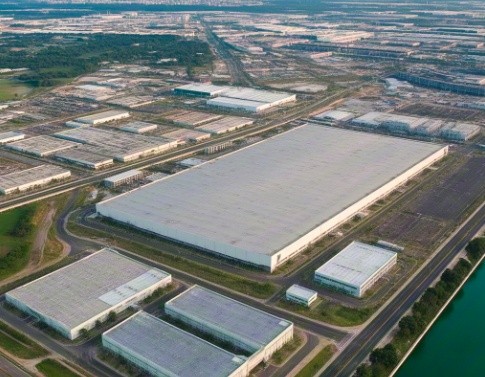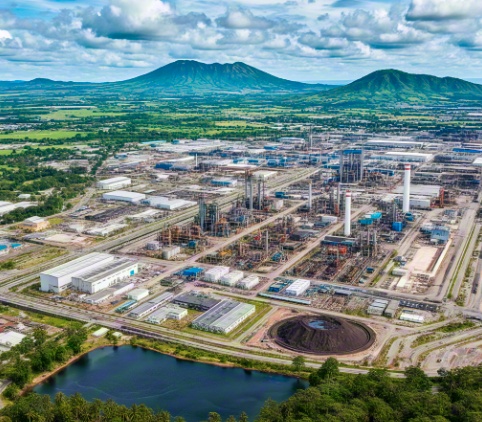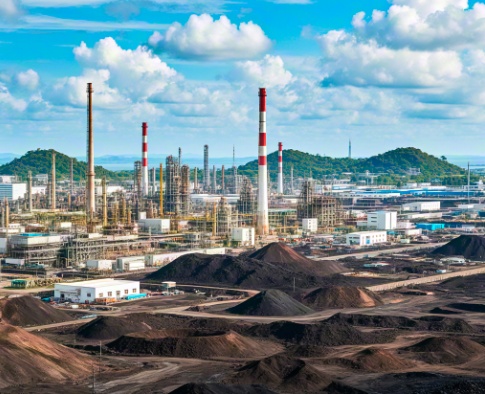China's lithium battery industry heads to southeast asia: New Gold Mountain Opens, See How Plastics and Chemical Companies Are Quick to Act
Specialized VisionOn August 21, citing the latest report from Rhodium Group, it was revealed that in 2024, the scale of overseas investment in China's electric vehicle industry chain will reach $16 billion, surpassing the domestic investment of $15 billion for the first time. The battery sector accounts for 74% of this investment, becoming the main driver of overseas expansion. Leading companies such as CATL and EVE Energy are establishing a global supply chain system with a "localized support" approach through international layouts. Europe and Southeast Asia remain the top two investment destinations.

The image is AI-generated.
Southeast Asia: Lithium Battery Industry"Increasing" New Battlefield
According to statistics from the 21st Century Business Herald, in the first half of 2025, nearly ten lithium battery companies announced investment plans in Southeast Asia. Sunwoda plans to invest 2 billion in building a factory in Vietnam and advancing IPO financing; CATL cooperates with Indonesian state-owned enterprises, investing 5.9 billion USD to create a full industry chain project; EVE Energy is constructing a new energy storage battery project in Malaysia; Huayou Cobalt has replaced Korea's LG Energy to become the strategic investor in a 61.5 billion battery project in Indonesia.
In the increasingly competitive global lithium battery industry, Southeast Asia is becoming a new investment focus. The giants are setting up operations, causing the heat of the Southeast Asian lithium battery industry to soar, and the reason lies in the fact that...Southeast Asia attracts lithium battery companies with significant advantages, mainly in resources, policies, and costs.。
On resources,Indonesia's nickel and cobalt production accounts for a large share of the global total.These advantages serve as a magnet, attracting enterprises to invest and develop their businesses, providing raw material security for nickel-based batteries. In terms of policy, Malaysia is planning the penetration rate of electric vehicles, and Thailand is attracting factory construction by relying on its vehicle manufacturing clusters. Cost-wise, the low labor costs and proximity to China facilitate technology transfer and supply chain collaboration.
The imposition of tariffs by the United States on Chinese lithium batteries has hindered China's lithium battery exports. Southeast Asia, with its advantages, has become an alternative route for indirect exports. However, the photovoltaic industry once faced tariff barriers due to the US anti-dumping and countervailing duty investigations, which serves as a warning to lithium battery companies. Although Southeast Asia can temporarily mitigate risks, the threat of trade protectionism remains, and similar challenges may be encountered in the future.
Supply Chain Integration: Key Materials Take the Lead
In the battery supply chain layout, the separator, cathode, and anode materials are key materials, and many companies are actively seeking to break through and develop in Southeast Asia.
In the field of lithium battery separators,Enjie Co., Ltd. The "Europe + Southeast Asia" dual hub strategy: The first phase of the Hungary base, with a 400 million square meter coating film production line, has been successfully put into operation. The second phase is planned to have a capacity of 800 million square meters, and orders of 960 million square meters have been secured from customers such as Ultium Cells. Meanwhile, Enjie Co., Ltd. has planned a capacity of 1 billion square meters in Malaysia. By 2024, its global market share in the wet process separator sector will exceed 30%, demonstrating its strong market competitiveness.Xingyuan MaterialUsing Singapore as a hub to radiate into Southeast Asia, an investment of HKD 5.46 billion was made in the Malaysian base, securing a separator order of 2 billion square meters from EVE Energy. Additionally, the U.S. base is in the equipment installation phase and is expected to achieve mass production by 2025.
Positive electrode material companies are also actively engaging in resource integration.Hunan Yunneng Invest 950 million yuan in Malaysia to build a 90,000-ton cathode material project, further expanding the overseas market.Huayou CobaltThe second phase of the "Annual Production of 50,000 Tons of High-Nickel Precursors" project in Indonesia has been completed. This project has established a complete closed-loop system of "nickel mining - precursor production - recycling," effectively ensuring a stable supply of raw materials and reducing production costs.

The image is AI-generated.
The Southeast Asian new energy market is currently booming, with the demand for key battery materials increasing day by day. These companies, by establishing an early presence in Southeast Asia, are poised to leverage geographical and cost advantages to gain a foothold in the local market, enhance their profitability, and lay a solid foundation for further deepening and development in the region.
Battery Recycling: Building a Regenerative Circular Network
Zhuan Su Shijie recently discovered that online discussions about the procedures required for setting up used battery recycling in Southeast Asia or ASEAN countries have been gaining popularity. Behind this phenomenon is the discreet expansion of battery companies into the downstream recycling sector in Southeast Asia.
As battery companies accelerate their expansion into Southeast Asia, they are also making moves in the downstream recycling sector. However, the overall situation is still in its early stages.February 20, 2025Guangdong Jinsheng New Energy Co., Ltd. and Indonesia PT ELVINDO signed a strategic cooperation framework agreement.Both parties will engage in deep cooperation across multiple fields such as lithium battery recycling, jointly creating a closed-loop new energy industry chain in Southeast Asia to contribute to the global green energy transition. This has become a typical example of battery recycling layout in Southeast Asia.

The image is generated by AI.
Moreover, many companies are also taking proactive actions.EVE Energy, in collaboration with GEM Co., Ltd., Huayou Cobalt, and others, initiates."Global Lithium Battery Recycling Network Platform"Integrating Jin Jing New Energy's recycling channels covering 70 outlets in 28 countries, the plan aims to achieve a recycling capacity of 120,000 tons per year by 2030, with the establishment of 1,000 global recycling points. Through the "Cradle Plan," retired battery traceability management will be implemented, combining GEM's urban mining technology and Huayou Cobalt's hydrometallurgical capabilities to build a "production - use - recycling" closed-loop industrial chain. Projects like the integrated solar-storage project by CATL and Singapore's Vanda RE will leverage the Indonesia-Singapore "Green Economy Corridor" for electricity export, representing a practical exploration of this industrial chain model in Southeast Asia.
Although the current scale of battery recycling in Southeast Asia is limited and the system is not yet fully developed, as the Southeast Asian new energy vehicle market gradually expands, the demand for battery recycling is bound to increase significantly in the future. Its development potential is enormous, and it is expected to become a new growth pole in the global battery recycling field.
Epilogue:
Southeast Asia's electric vehicle sales forecastThe compound annual growth rate from 2024 to 2029 is expected to reach 22%. In addition to passenger vehicles, the demand for batteries for electric buses and drones will also increase. Chinese companies are using Singapore as a strategic hub to establish production bases in surrounding countries, which can reduce the risk of trade friction and enhance global competitiveness.
From nickel mining to battery recycling, Chinese lithium battery companies are building a full industry chain ecosystem in Southeast Asia. Despite facing trade barriers and geopolitical risks, Southeast Asia remains a crucial pivot for the internationalization of the lithium battery industry chain due to its resource endowment and transformation needs. As the Rhodium Group report states, the globalization of Chinese battery companies is reshaping the global new energy industry landscape.
【Copyright and Disclaimer】This article is the property of PlastMatch. For business cooperation, media interviews, article reprints, or suggestions, please call the PlastMatch customer service hotline at +86-18030158354 or via email at service@zhuansushijie.com. The information and data provided by PlastMatch are for reference only and do not constitute direct advice for client decision-making. Any decisions made by clients based on such information and data, and all resulting direct or indirect losses and legal consequences, shall be borne by the clients themselves and are unrelated to PlastMatch. Unauthorized reprinting is strictly prohibited.
Most Popular
-

EVA Morning Prices on September 12: Most of the Market Holds Steady, Highest Rise of 50 Yuan
-

Domo Chemicals Files for Bankruptcy Protection in Germany! B. Braun Launches New Supply Assurance Program
-

Vynova's UK Chlor-Alkali Business Enters Bankruptcy Administration!
-

[PET Weekly Outlook] Polyester Bottle Chips Expected to Oscillate and Warm Up with Costs Today
-

Case Study | Clariant AddWorks™ Additives Solve Plastic Yellowing Problem






